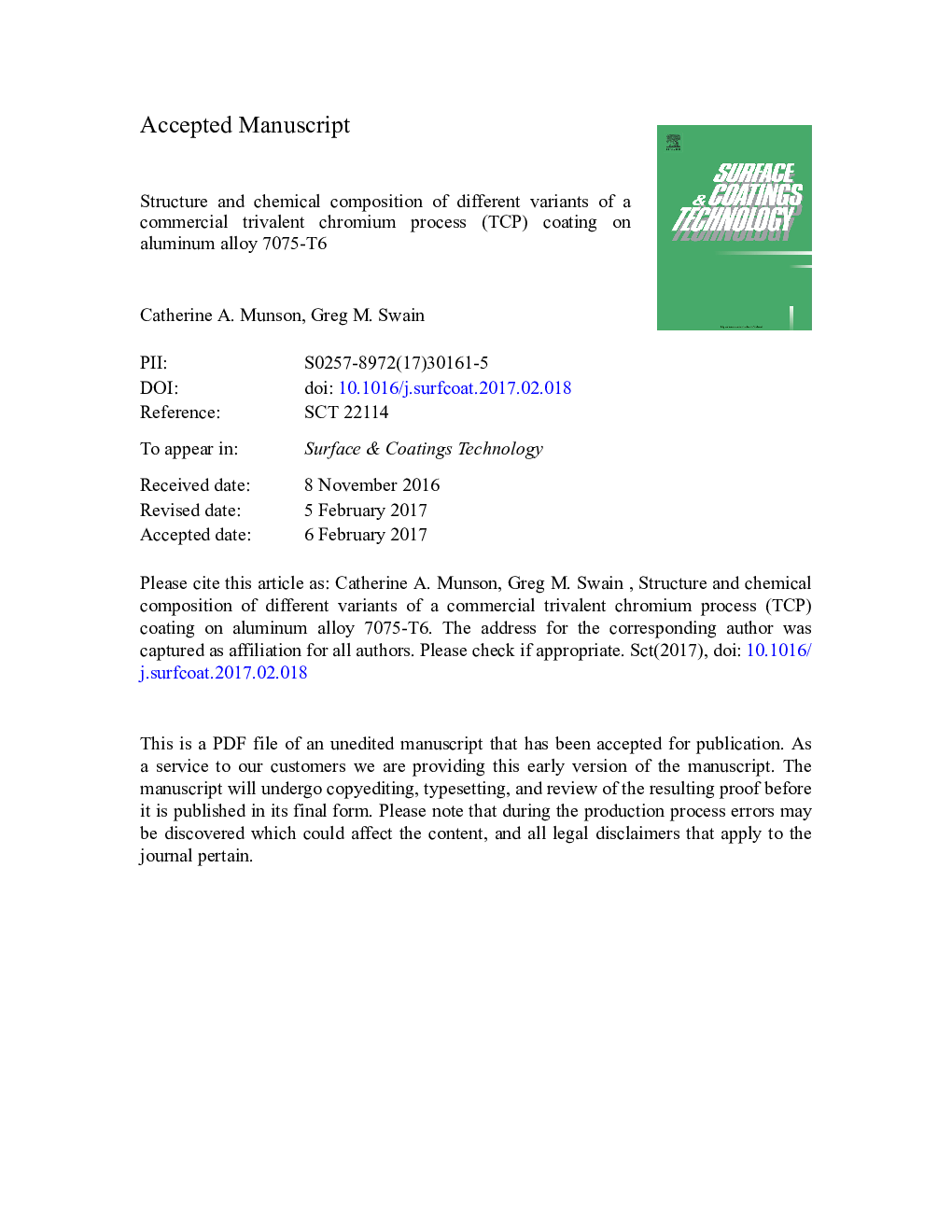| Article ID | Journal | Published Year | Pages | File Type |
|---|---|---|---|---|
| 5464667 | Surface and Coatings Technology | 2017 | 45 Pages |
Abstract
The structure and chemical composition of different variants of a commercial (SurTec 650 chromitAL) trivalent chromium process (TCP) conversion coating formed on AA7075-T6 are reported on. Comparison of coatings formed by immersion and spray was undertaken. Three different variants of the TCP coating were studied: 650 E, C and V. ICP-OES revealed similar concentrations of Cr in all three coating baths but differences in Zr, Zn, S (likely as sulfate), and Fe among the three. SEM and EDXS analysis revealed the coating forms (immersion and spray) over the entire alloy surface with some enrichment or thickening on and around intermetallic particles. The coatings generally consist of nodular particles (aggregates) that decorate the surface with the greatest number density seen for 650 E. Cracking and delamination were seen only for 650 C applied by immersion. The conversion coatings (immersion or spray) become more hydrophobic over a 7-day aging period in the laboratory air. Static water contact angles at day 7 are 60-90° for all the coatings. Ellipsometry data indicated 650 E is the thickest of the three coatings at 95 nm after a 7-day aging period in the laboratory air. Overall, the thickness of the spray-coated films (3 min) is less than the immersion-coated films (4 min). Finally, Raman spectroscopy confirmed the presence of localized regions of Cr(III)-O species (e.g., Cr(OH)3) in the coatings with co-localized and transiently-formed Cr(VI)-O species (e.g., CrO42 â and or HCrO4â).
Related Topics
Physical Sciences and Engineering
Materials Science
Nanotechnology
Authors
Catherine A. Munson, Greg M. Swain,
